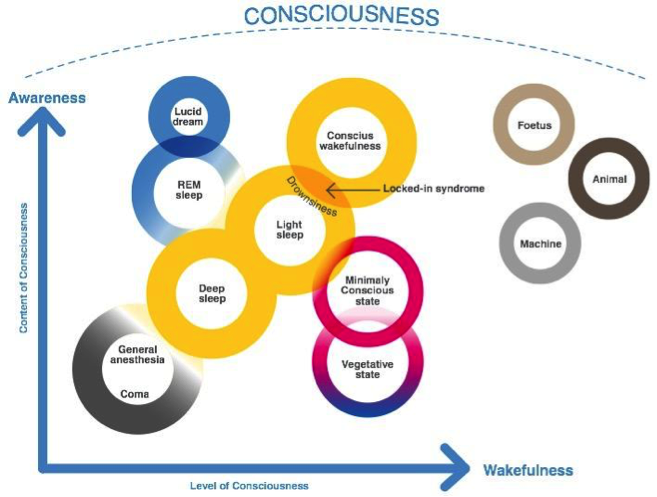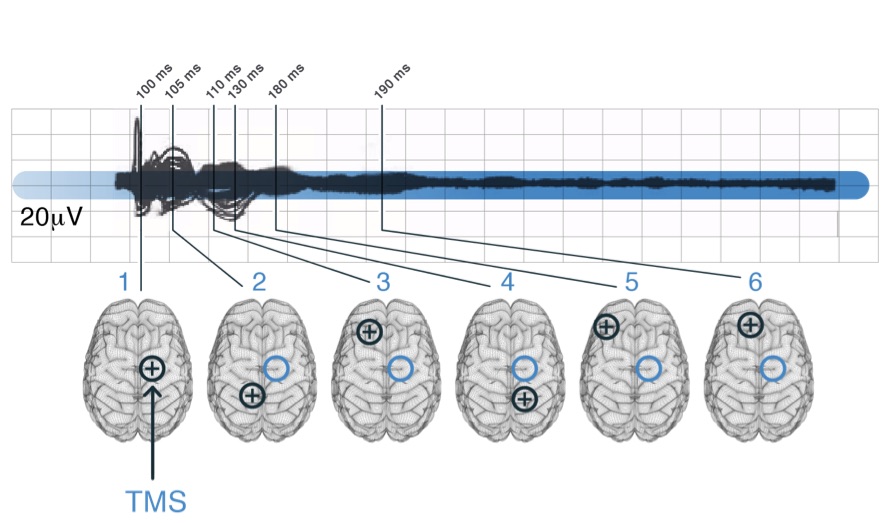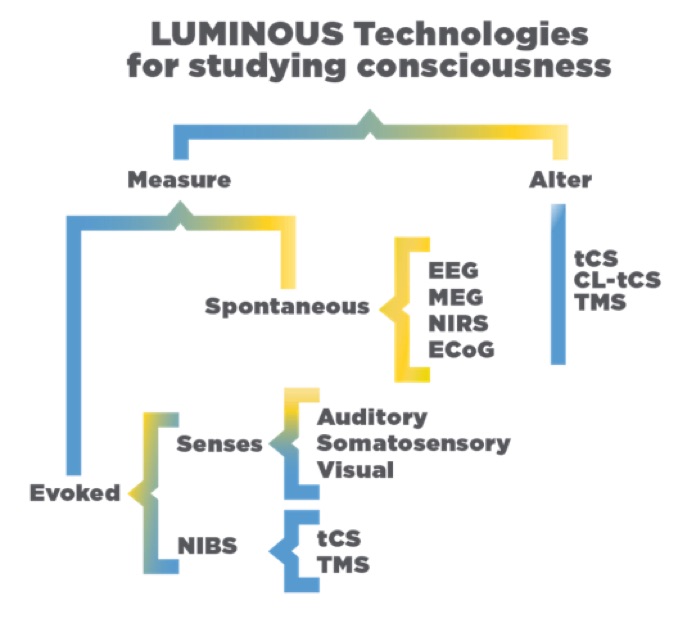On April, 2016, Starlab kicked-off the H2020 FET Open project Luminous. The FET Open program is one of the most competitive programs within the European funding landscape. Since the launch, Starlab proudly coordinates one of the only 11 out of 800 projects selected for funding in that call.
The Luminous project aims to study consciousness by combining the general frameworks of Information Theory and the electromagnetic nature of brain activity. The general goal of the project is advancing the scientific study of consciousness as well as to find applications for consciousness measurement and alteration technologies grounded on electrophysiology and non-invasive brain stimulation techniques.
As once was done with the HIVE project, which helped give birth to Neuroelectrics, Starlab expects Luminous to achieve a major breakthrough in neurotechnology. The expectations are once again to bring the project results into the market in the form of Digital Health services, relying on brain data science and advanced electrotherapies.
Alas, some fundamental scientific questions related to consciousness still need to be answered. The project team, which includes some of the best specialists in the world, attempts to answer, during the three years of the project, the following questions about consciousness and its research.

Firstly, the scientific definition of consciousness is an ambitious question with no unique answer. It is an umbrella term that covers a wide variety of mental phenomena. The plot shown above, adapted from a work by Steven Laureys published in 2005 in Trends in Cognitive Sciences, shows consciousness as a relationship between awareness (as the ability to know and perceive or feel) and wakefulness (a brain state where an individual engages to the external world in a coherent way).
I remember flying to Paris to explain to Steven the project plans. To my surprise (because I did not know him at all at that time) he accepted to participate very quickly. The plot above represents a general framework that has been one of the inspirational starting points of Luminous. It allows to turn the more ethereal concept of consciousness into a taxonomy with clinical implications.
The project includes the participation of people suffering of Disorders of Consciousness (Coma, Unresponsive Wakefulness State, Minimal Consciousness State) who are treated at Steven’s group in Liege. Locked-In patients are also included. They are being treated at Tübingen by world BCI leader Niels Birbaumer and his group. Michael Nitsche, who is one of the most prominent transcranial current stimulation experts, and his group are experimenting on sleep, including the very interesting state of lucid dreaming. Healthy subjects under anesthesia will be analyzed by Irene Tracey and her collaborators at Oxford.
Where to place in this general framework fetal brain activity is one of the most challenging questions in the project, which will be addressed by Hubert Preussl and his team. The work by Marcello Massimini and his group constitutes a cornerstone of the project. They could correlate changes in the brain signal complexity after Transcranial Magnetic Stimulation (TMS) with differences in consciousness levels (as seen in the plot adapted from the 2013 article by Casali et al., published in Science Translational Medicine in 2013). We, at Starlab, found in that work the perfect link to non-invasive brain stimulation protocols as a fundamental technology to probe consciousness.

We immediately wondered whether we could find an analogous measurement technique based on transcranial current stimulation. The basic idea of the TMS-based probing technique is to actively ping the brain with an external stimulation independent from the regular sensory pathways. The activity generated from this input spreads differently depending on the consciousness level. What is measured then is the complexity of the brain signals.
The relationship between consciousness and complexity has been already explored by several researchers. This matter is further explored within project works by Marcello and Giulio Ruffini, who have been fascinated by the relationship of conscious experience with Information theory and Complexity for some years. They will have the help of Fabrice Wendling and his team, which will develop computational simulations of neuronal activity to better understand this relationship.

In Neuroscience, the measurement of consciousness has been tackled by finding so-called neural correlates of consciousness. They are studied by establishing relationships between behavioral consciousness and the observed neural mechanisms underlying them. Methodologies to establish these neural correlates are structured in the former plot under ‘measurement’ techs.
However, Luminous does not only aim to study the neural correlates of consciousness. Luminous aims to find out if electromagnetic non-invasive brain stimulation can be applied to alter consciousness states. This project branch is expected to be applied in the long-run in clinical settings for treating Disorders of Consciousness or for inducing consciousness states of clinical relevance, on-demand: e.g. sleep or anesthesia. This is definitely an extremely challenging target. The first steps in this challenge are being taken during the course of the 4 years of the Luminous project. We expect to deliver encouraging results. Stay tuned, we will keep you posted on this channel.
